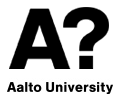Jointly with Prof. Ruud van Ommen, I (Prof. Riikka Puurunen) gave a presentation at the AVS 20th International Conference on Atomic Layer Deposition (ALD 2020) featuring the 7th International Atomic Layer Etching Workshop (ALE 2020), adapted into a Virtual Meeting, Jun 29 – Jul 1, 2020, https://ald2020.avs.org, aimed to initiate/contribute to discussion of the fundamentals in the field of atomic layer deposition (ALD).
Please find the abstract of the presentation in this blog post, below. Once the slides and video record of the talk are openly available, the purpose is to link them to this post, too.
- Update, 21.7.2020, slides: https://www.slideshare.net/RiikkaPuurunen/on-the-fundamentals-of-ald-the-importance-of-getting-the-picture-right-by-puurunen-and-van-ommen
- Update, 5.8.2020:,video in Youtube and in Panopto: https://youtu.be/jqm_wf49WwM https://aalto.cloud.panopto.eu/Panopto/Pages/Viewer.aspx?id=13ed854b-5df8-4d37-8ff1-ac0d00dde319
Title: On the fundamentals of ALD: the importance of getting the picture right
Authors: Riikka L. Puurunen and J. Ruud van Ommen
Session: Precursors and Chemistry: Simulation, Modeling, and Theory of ALD
Abstract Text:
Atomic layer deposition (ALD) has become of global importance as a fundamental building block for example in semiconductor device fabrication, and also gained more visibility (e.g., the Millennium Technology Prize 2018). In recent years, the number of ALD processes has increased, new groups have entered the field, and fundamental insights have been gained. At the same time, significantly varying views exist in the field related to the description and meaningfulness of some core ALD concepts. Open, respectful but critical scientific discussion would be needed around these concepts – for example at this AVS ALD/ALE conference, the world’s largest conference on ALD.
The discussion on terminology of ALD that started in the 2005 surface chemistry review [1] is continued in this contribution, taking into account recent progress reported in leading reviews such as Ref. 2. We start by considering the concept of “ideal ALD”. How should it be defined so that the well- recognized practical benefits of ALD are maintained, while no unnecessary utopian requirements are created? We propose that the repetition of well- separated saturating, irreversible chemisorption reactions (which by definition saturate at a monolayer of the chemisorbed species) is sufficient to reproduce the benefits of ALD. A requirement of “full monolayer growth” (of the ALD-grown material), progressed e.g. in numerous cartoons of ALD, is not needed. There should also be no reason to expect a constant growth per cycle (GPC) within the ALD window (the saturating chemistry is typically weakly temperature dependent), although such a scheme is repeatedly reproduced in the literature.
Other fundamental concepts will be pointed out, where mix-ups have been created. For example, although the GPC (or etch per cycle in Atomic Layer Etching) is a saturation-related concept and not a time-related kinetic parameter, Arrhenius plots have been sometimes created to extract “activation energies” of some process from these “growth/etch rates (per cycle)”. Also, “Langmuir adsorption” has been adopted as a way to model ALD in a simplified, lumped way. Notably, Langmuir adsorption assumes no interaction between adsorbed species, contrasting some recent discussions of “cooperative effects” in ALD. Also, concepts of “adsorption isotherm” and amount adsorbed vs. time (“saturation curve”), although fundamentally different, have been mixed.
We hope that the discussion on the fundamentals of ALD will be intensified, and that the discussion will help the field progress and flourish in the future.
[1] Puurunen, J. Appl. Phys. 97 (2005) 121301.
[2] Richey, de Paula, Bent, J. Chem. Phys. 152 (2020) 040902.

